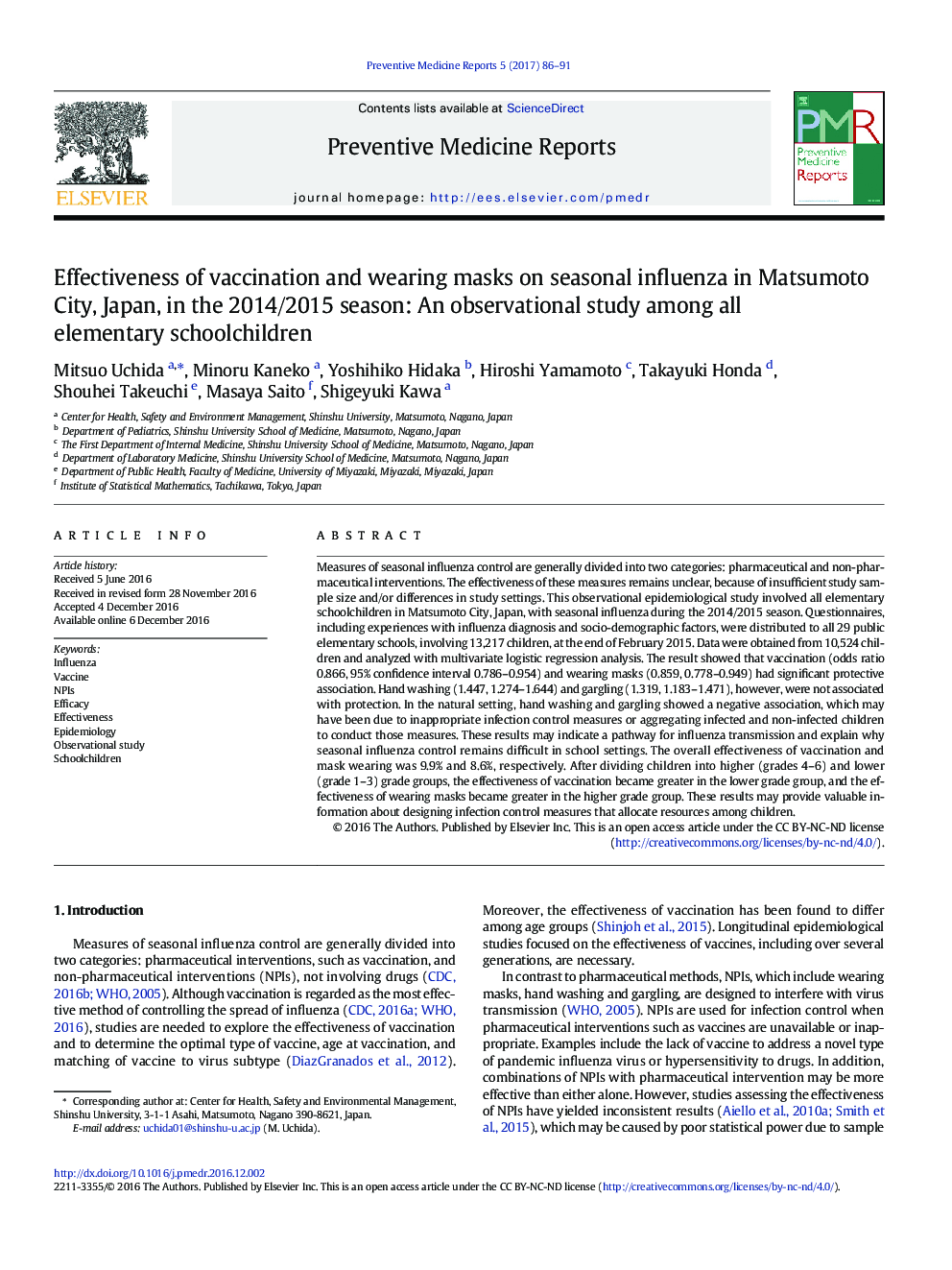| کد مقاله | کد نشریه | سال انتشار | مقاله انگلیسی | نسخه تمام متن |
|---|---|---|---|---|
| 5723757 | 1609087 | 2017 | 6 صفحه PDF | دانلود رایگان |
- An influenza survey was conducted in all 29 elementary schools in Matsumoto City.
- Vaccination and wearing of masks were effective in infection control.
- Effectiveness of protection methods differed between old and young schoolchildren.
- Communal hand washing and water gargling was associated with the risk of influenza.
Measures of seasonal influenza control are generally divided into two categories: pharmaceutical and non-pharmaceutical interventions. The effectiveness of these measures remains unclear, because of insufficient study sample size and/or differences in study settings. This observational epidemiological study involved all elementary schoolchildren in Matsumoto City, Japan, with seasonal influenza during the 2014/2015 season. Questionnaires, including experiences with influenza diagnosis and socio-demographic factors, were distributed to all 29 public elementary schools, involving 13,217 children, at the end of February 2015. Data were obtained from 10,524 children and analyzed with multivariate logistic regression analysis. The result showed that vaccination (odds ratio 0.866, 95% confidence interval 0.786-0.954) and wearing masks (0.859, 0.778-0.949) had significant protective association. Hand washing (1.447, 1.274-1.644) and gargling (1.319, 1.183-1.471), however, were not associated with protection. In the natural setting, hand washing and gargling showed a negative association, which may have been due to inappropriate infection control measures or aggregating infected and non-infected children to conduct those measures. These results may indicate a pathway for influenza transmission and explain why seasonal influenza control remains difficult in school settings. The overall effectiveness of vaccination and mask wearing was 9.9% and 8.6%, respectively. After dividing children into higher (grades 4-6) and lower (grade 1-3) grade groups, the effectiveness of vaccination became greater in the lower grade group, and the effectiveness of wearing masks became greater in the higher grade group. These results may provide valuable information about designing infection control measures that allocate resources among children.
Journal: Preventive Medicine Reports - Volume 5, March 2017, Pages 86-91
